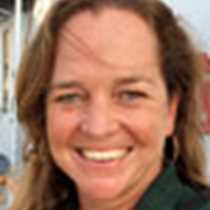Santiago Island
February in the Galápagos is a time of tropical conditions that is in total contrast to the usual cool, temperate conditions. The islands are swept by warm waters from the north – in fact they have not been cooler than 81¢ªF all week – which warms the air and produces beautiful clouds, spectacular sunsets and localised precipitation. The sporadic heavy showers allow the arid lowlands of the archipelago to flourish and the usual desert landscapes are replaced by scenes of greenery and life, to the delight of the terrestrial species that usually struggle to eke out a living. Our hikes inland are alive with bird song and bustling activity, as finches, flycatchers , warblers and mockingbirds cheerily feed, build nests and find mates. And not only does this apply to the land birds, but for all Galápagos reptiles too, with land and marine iguanas, giant tortoises and lava lizards joining in the fun.
Before breakfast this morning, to avoid the heat and enjoy the special early morning light, we landed on a long black beach called Playa Espumilla, which is one of the principal sea turtle nesting colonies in the Galápagos. And as February is also the peak of the green turtle nesting season, the beach was streaked with tracks left by these ancient creatures as they crawled up above the high tide line to dig nests and lay eggs during the dark. Turtles were everywhere to be seen in the surrounding waters, including a few of the “double-decker” variety!
We crossed through thefringe of button mangroves lining the beach and into an enchanted forest of mature Palo Santo (or incense) trees, home to many endemic land birds and terrestrial invertebrates. After enjoying views of the area we returned to the ship for breakfast and re-positioned to the historically famous Buccaneer Cove, in the footseps of countless ships over the centuries, including the HMS Beagle. The warm season has offered wonderful snorkelling opportunities this week, and this cove was no exception. We spent a relaxing yet busy late morning of water activities, with snorkelling, kayaking, glass-bottom boat and Zodiac cruises.
Our exploration of Santiago Island, fourth largest of the archipelago, continued that afternoon at yet a third site, Puerto Egas, site of beach activities and a wonderful afternoon nature walk along an indented shoreline, home to both sea lion species, sea and shore birds and fascinating geological features. Yet another unforgettable day in Galápagos!




